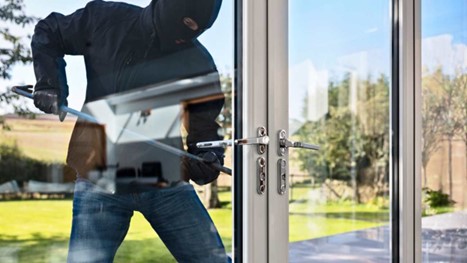When most of us look at glass, we are likely to see a clear, fragile material good for windows or drinkware. But glass can serve protective purposes, too. By bonding sheets of glass and plastic, a safety barrier emerges that can withstand intense impacts while keeping people safe.
This ingenious product, laminated safety glass, shields and saves lives daily across vehicles and buildings. In the section below, we’ll discuss everything you need to know about laminated safety glass.
What is Laminated Safety Glass?
Laminated safety glass is typically made of vinyl and comprises two or more sheets of glass held together by an interlayer. The vinyl interlayer acts as a bonding agent and helps keep the glass layers together even when broken.
To make laminated glass, the individual sheets of glass are cut to size first. These glass sheets are then meticulously cleaned to remove any dust, oils or debris that could interfere with bonding.
Next, a piece of vinyl interlayer, also cut to the same size as the glass, is inserted between the glass sheets. The glass and interlayer are assembled and sent through giant rubber rollers under heat and pressure to fuse them. The heat softens the vinyl interlayer to flow and bond with the glass sheets.
The pressure from the rollers removes any air pockets and ensures a tight seal across the entire surface of the glass. The result is a durable laminated safety glass composed of at least two layers of glass fused by a tough interlayer in the middle.
Uses of Laminated Glass
Here are some of the main uses and applications of laminated glass:
-
Safety and security
The laminate interlayer holds shards of glass together if the glass breaks, preventing injury and reducing damage. This makes laminated glass ideal for car windshields, building windows, doors, skylights, etc.
-
Sound dampening
The vinyl interlayer blocks noise transmission, so laminated glass helps reduce outside sounds permeating indoors. This provides acoustic privacy in offices, homes, hotels, etc.
-
UV ray protection
Laminated glass can be manufactured with interlayers that filter out ultraviolet rays, helping protect interior furnishings/artwork from sun damage. This extends the lifespans of furnishings in homes, museums, and offices with ample sunlight.
-
Impact and intrusion resistance
The laminate increases strength and makes it hard for laminated glass to break through. This is why laminated glass is used for bullet-resistant glass in armored vehicles, banks, and other security installations.
-
Decorative applications
Colored, patterned, or frosted interlayers can be sandwiched between glass panels for unique aesthetic looks. This decorative laminated glass is used in partitions, skylights, furniture, etc.
Tips to Maintain Laminated Glass
Here are some tips to help maintain laminated glass:
-
Clean regularly
Clean the glass with a damp microfiber cloth or newspaper. Avoid abrasive cleaners or scrubbing pads that could scratch the surface. Ammonia-free glass cleaner is also safe for laminated glass.
-
Inspect for damage
Check the edges and surfaces of the laminated glass periodically for any chips, cracks, or signs of delamination. Even hairline cracks can weaken the structure of the glass over time. If you notice any damage, contact a glass repair company immediately.
-
Avoid excessive impact and strain
Laminated glass is designed to withstand force and pressure. However, avoid slamming doors or applying extreme pressure on the surface, which could cause delamination or cracks. The inner plastic layer also protects the glass from shattering on impact but has its limits before damage occurs.
-
Control temperature changes
The lamination process uses heat, so exposure to extreme temperature swings can stress the bond between the glass and plastic interlayer. Try using shades or drapes to moderate hot and cold conditions when possible. Let the glass adjust slowly if you move it between environments.
-
Watch for trapped moisture
Moisture in the air or standing water left on the glass surface can penetrate the edges and cause issues like cloudiness or delamination over time. Keep the edges sealed properly and wipe standing water to reduce moisture damage.
-
Re-apply window films
If the laminated glass has an applied window film for UV protection or temperature control, expect to replace it occasionally as the adhesives wear out. Use care when removing old films to avoid harming the underlying glass.
The Bottom Line
Laminated safety glass is a versatile, durable material composed of glass fused with vinyl interlayers to increase strength and safety. Its security, sound dampening, UV protection, and decorative properties make laminated glass integral to buildings and vehicles worldwide. It would be best to get help from AIS Glass to install these laminated glasses.

